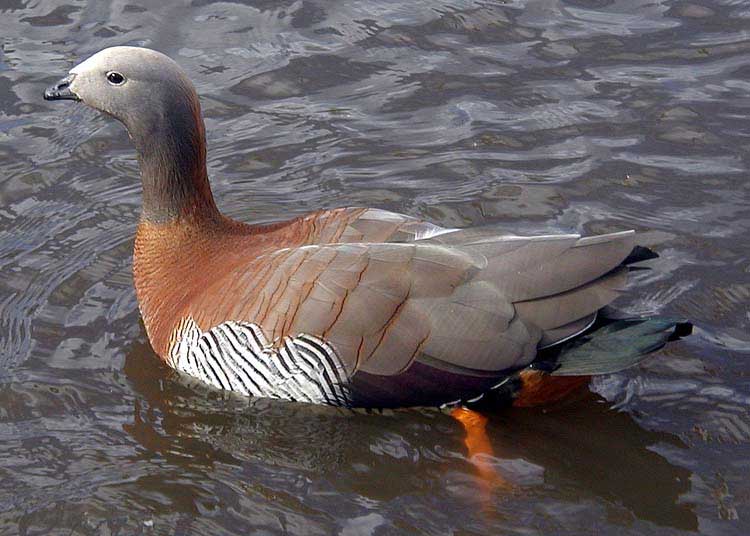
Chloephaga poliocephala, Photo: Arpingstone
Superregnum: Eukaryota
Regnum: Animalia
Subregnum: Eumetazoa
Cladus: Bilateria
Cladus: Nephrozoa
Superphylum: Deuterostomia
Phylum: Chordata
Cladus: Craniata
Subphylum: Vertebrata
Infraphylum: Gnathostomata
Superclassis: Tetrapoda
Cladus: Reptiliomorpha
Cladus: Amniota
Classis: Reptilia
Cladus: Eureptilia
Cladus: Romeriida
Subclassis: Diapsida
Cladus: Sauria
Infraclassis: Archosauromorpha
Cladus: Crurotarsi
Divisio: Archosauria
Subsectio: Ornithodira
Subtaxon: Dinosauromorpha
Cladus: Dinosauria
Ordo: Saurischia
Cladus: Eusaurischia
Cladus: Theropoda
Cladus: Neotheropoda
Infraclassis: Aves
Cladus: Euavialae
Cladus: Avebrevicauda
Cladus: Pygostylia
Cladus: Ornithothoraces
Cladus: Euornithes
Cladus: Ornithuromorpha
Cladus: Ornithurae
Cladus: Carinatae
Parvclassis: Neornithes
Cohors: Neognathae
Cladus: Galloanseres
Ordo: Anseriformes
Familia: Anatidae
Subfamilia: Tadorninae
Genus: Chloephaga
Species: Chloephaga poliocephala
Name
Chloephaga poliocephala Sclater, 1857
References
Sclater, P.L. 1857. Note on the Upland Goose. Proceedings of the Zoological Society of London Pt.25 no.334: 128. BHLReference page.
Vernacular names
čeština: Husice rudoprsá
Deutsch: Graukopfgans
English: Ashy-headed Goose
español: Cauquén cabecigrís
français: Ouette à tête grise
magyar: Szürkefejű lúd
日本語: コバシガン
The ashy-headed goose (Chloephaga poliocephala) is a large sheldgoose, which breeds in mountainous areas of southernmost South America and winters on lowlands just north of its breeding range.
The lined nest is built in tall grass, and 4–6 eggs are laid. This terrestrial species favours damp upland forest clearings and feeds by grazing; it rarely swims.
Description
Parents with chicks in Tierra del Fuego
Juveniles in Patagonia
The ashy-headed goose is a stocky 50–55 cm (20–22 in) bird with a pale brown back, chestnut neck and black-barred white flanks. The head is grey and paler over the crown. The inside of the legs are black and the outside of the legs are red. Sexes are similar, except that the male may have reduced or no underparts barring. Immature birds are duller and have brown heads.
In flight, this species shows black primaries, with the rest of the wing white except for a broad green bar. The male's call is a soft whistle, and the female's is a harsh cackle.
References
BirdLife International (2016). "Chloephaga poliocephala". IUCN Red List of Threatened Species. 2016: e.T22679981A92837255. doi:10.2305/IUCN.UK.2016-3.RLTS.T22679981A92837255.en. Retrieved 12 November 2021.
Madge, Steve; Burn, Hilary (1988). Waterfowl: an Identification Guide to the Ducks, Geese, and Swans of the World. Boston: Houghton Mifflin. ISBN 0-395-46727-6.
Retrieved from "http://en.wikipedia.org/"
All text is available under the terms of the GNU Free Documentation License

